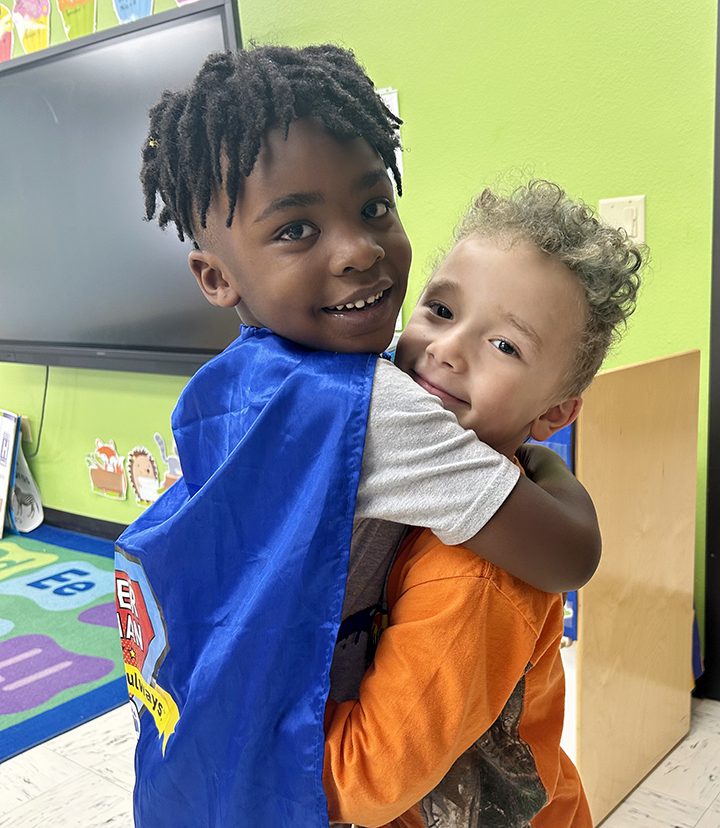How Trauma-Sensitive Learning Is Continuing Online
May 11, 2020
When the threat of COVID-19 arrived, schools responded quickly. Principals made announcements, administrators hustled, and teachers developed lesson plans. In a matter of days, students were learning from home.
But as any instructor knows, academic content represents a single facet of education. Developing social skills and emotional intelligence may contribute just as much to a student’s personal formation as learning to read or doing long division.
 This is especially true when it comes to trauma-sensitive learners. About half of all school-age children have suffered adverse childhood experiences (ACEs). Trauma past or present shapes how students learn, with profound effects on educational outcomes.
This is especially true when it comes to trauma-sensitive learners. About half of all school-age children have suffered adverse childhood experiences (ACEs). Trauma past or present shapes how students learn, with profound effects on educational outcomes.
Lockdowns present real challenges to offering trauma-sensitive learning. Not only do they make it more difficult to support students with ACEs, but they also create a fertile environment for intensified stress and abuse. Even in the healthiest homes, illness, lost income, or increased responsibilities can cause strain. And the situation is much worse in violent homes, where students can’t escape. Reports of exploitation are on the rise.
Fortunately, organizations dedicated to serving children navigating these challenges are showing great ingenuity in offering free online resources during this crisis.
- As you talk to students about the novel coronavirus, keep in mind the guidelines the CDC recommends for addressing this pandemic with children, who may feel disoriented, curious, or worried.
- For parents and teachers looking for ways to support their children through this crisis, this handout from The Attachment and Trauma Network (ATN) is a great place to start. It’s a reminder that many of the most meaningful things we can do for children during these times are simple gestures: showing empathy, offering choice, and modeling self-care.
- Another, detailed introduction to helping children confronted with stressful environments comes from the National Association of School Psychologists. Of particular interest here are the warning signs to look for in young persons who are in crisis and a catalog of organizations to contact if you notice a problem.
- The Center for Educational Improvement has informative blogs that focus on different facets of caring for students during this time of coronavirus, along with a constellation of other helpful assets.
- Teachers looking to make their virtual learning environments trauma-sensitive should explore some of the recommendations Brittany Collins makes in her widely-circulated opinion piece in Education Week.
- A rich repository of reference materials in both English and Spanish are available on The National Child Traumatic Stress Network (NCTSN) site. This content ranges from training manuals for mental health providers to cartoons modeling responses to virus-related trauma.
- When it comes to curricular resources to support social learning and emotional regulation, there are few remote offerings. A notable exception is Respectful Ways, a research-based, trauma-informed program that’s fully online. During COVID-19 closures, visitors can access three modules free with a coupon code.
 Teachers and parents have proven resourceful when it comes to meeting the needs of student populations during this crisis. Leveraging these assets, they should be able to meet some of the deepest needs of children in trauma: those affecting their emotional well-being.
Teachers and parents have proven resourceful when it comes to meeting the needs of student populations during this crisis. Leveraging these assets, they should be able to meet some of the deepest needs of children in trauma: those affecting their emotional well-being.
These are uncertain times. What does seem certain, however, is that schools will have to look different when they reopen. The trauma students are experiencing — of grief, anxiety, disconnection — is just beginning. Schools will have to adapt to serve these needs.
The good news is, educators are already hard at work at this task — with ample support from online resources.
This entry was posted in Blogs, SEL News and tagged home school, online learning, sel, trauma. Bookmark the permalink.


 Our 1st graders loved the Be Kind: It Feels Good course. The Kindness Hunt and bucket filling activities were the best. Very engaging.
Our 1st graders loved the Be Kind: It Feels Good course. The Kindness Hunt and bucket filling activities were the best. Very engaging. The Bored, Get Creative module was perfect for our 4th graders pre-winter break. We talked about things they could do if “bored”.
The Bored, Get Creative module was perfect for our 4th graders pre-winter break. We talked about things they could do if “bored”.